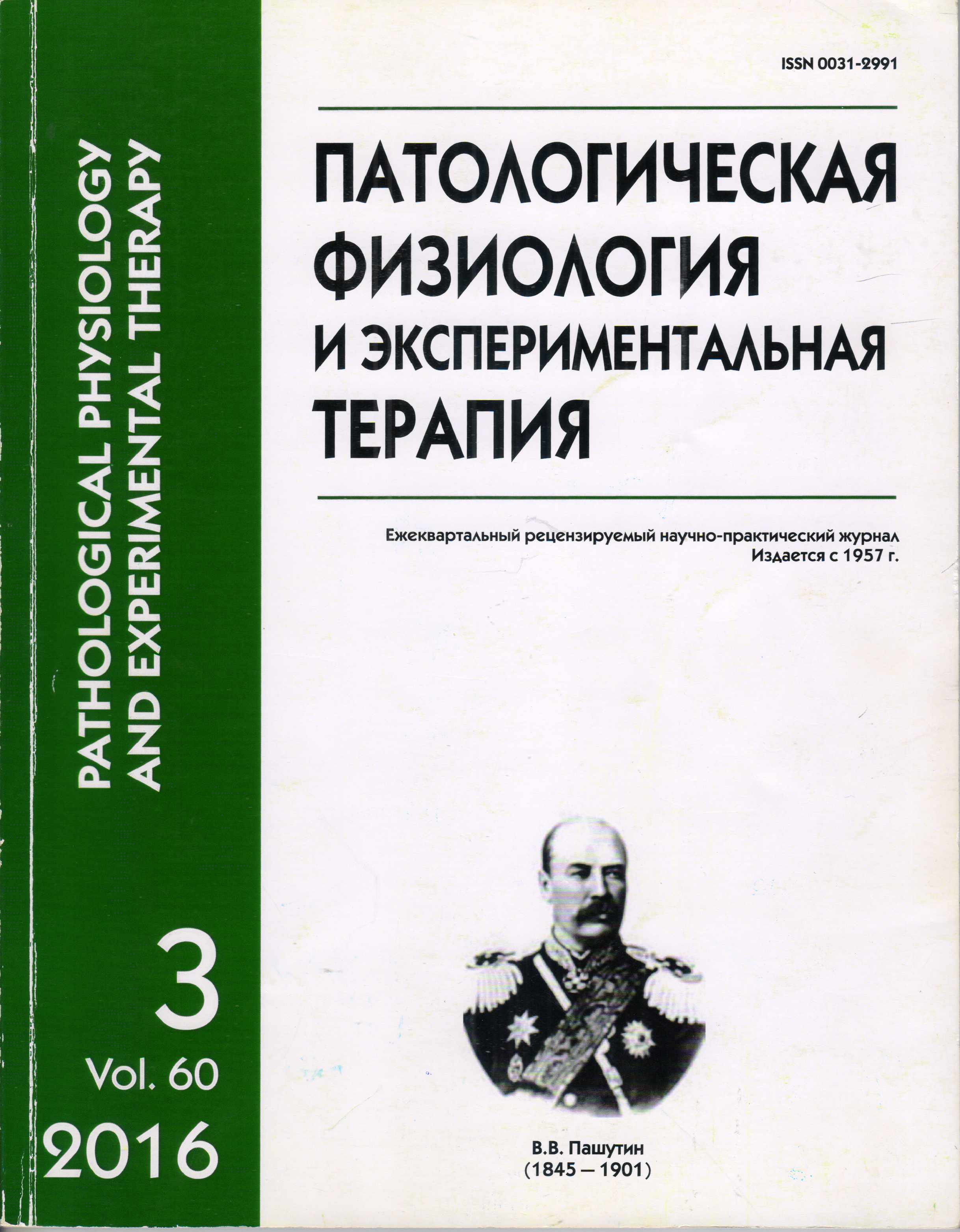Water balance of lung and nitrogen oxide in blood at experimental autoimmune encephalomyelitis after capsaicin blockade of vagus nerve
Keywords:
water balance of the lungs, nitric oxide, capsaicin, the vagus nerve, experimental autoimmune encephalomyelitis
Abstract
The purpose of research. To study the water balance of lung and NO level in blood in experimental autoimmune encephalomyelitis combined with capsaicin blockade of vagus nerve. Methods. Experiments were conducted on 47 adult (16-week-old) male rats weighing 220–280 g. To simulate the experimental autoimmune encephalomyelitis (EAE) rats were subcutaneously injected with encephalitogenic mixture in complete Freund’s adjuvant (0.2 ml; the content of inactivated Mycobacterium tuberculosis was 5 mg/ml) at the rate of 100 mg of homologous spinal cord homogenate per animal. Сapsaicin blockade was performed by bilateral application of 50 uM capsaicin («Sigma») on the neck portions of vagus nerves. The animals were divided into 4 groups: intact rats — control group1; rats with EAE; rats with capsaicin application on vagus nerve + EAE; sham operated rats subjected to vagus nerves allocation without the subsequent capsaicin application + EAE — control group 2. The next parameters were detected: the content of nitric oxide in blood plasma; protein content in broncho-alveolar lavage fluid; lung water balance indices including the amount of total, extra- and intravascular fluid and blood supply of lungs, which were calculated based on wet and dry lung mass and the hemoglobin content in blood and lung tissue determined by hemiglobincyanide method. Results. It was found that EAE is accompanied by an increase of total fluid, extravascular fluid (EVF) and blood supply of lungs on the background of increasing content of nitric oxide in arterial (art) and venous (ven) blood. In EAE and its combination with bilateral capsaicin blockade of vagus nerve a strong negative correlation between the NOart / NOven coefficient and EVF amount was found out. The blockade of capsaicin-sensitive vagal afferents normalized lung water balance impaired in EAE and restored the levels of nitric oxide in blood plasma. Conclusion. The obtained results suggest that capsaicin-sensitive vagal afferents with NO-ergic mechanisms involvment take part in the development of pulmonary hyperhydration during experimental autoimmune encephalomyelitis.Downloads
Download data is not yet available.
Published
07-08-2016
How to Cite
Urakova M. A., Bryndina I. G. Water balance of lung and nitrogen oxide in blood at experimental autoimmune encephalomyelitis after capsaicin blockade of vagus nerve // Patologicheskaya Fiziologiya i Eksperimental’naya Terapiya (Pathological physiology and experimental therapy). 2016. VOL. 60. № 3. PP. 18–22.
Issue
Section
Original research






